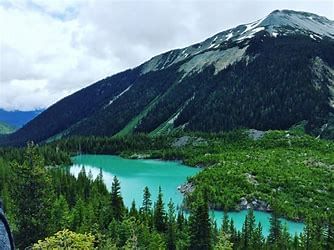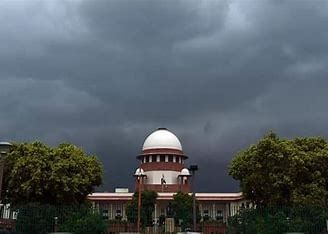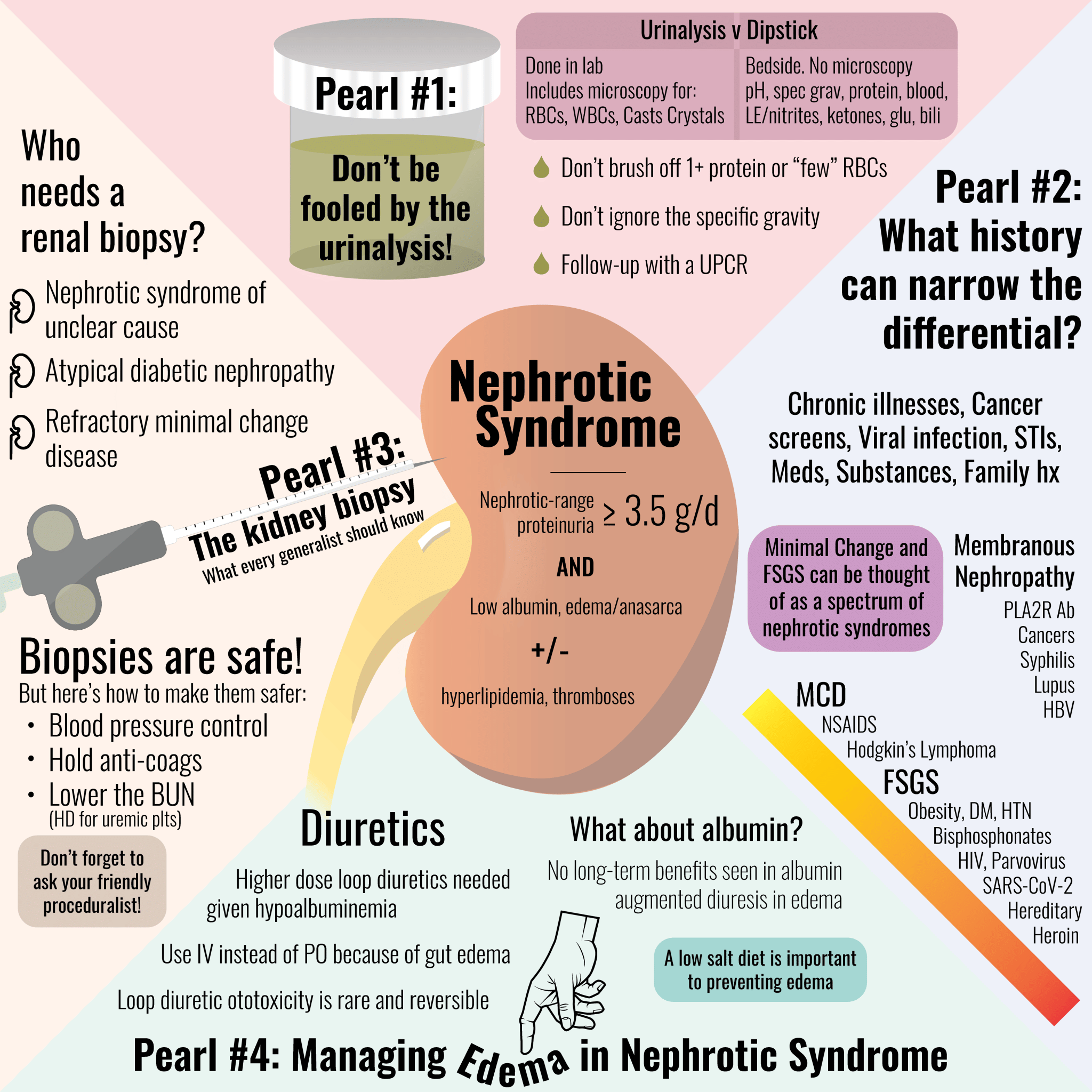UPSC Daily Current Affairs- 27th April 2024 | Current Affairs & Hindu Analysis: Daily, Weekly & Monthly PDF Download
GS-I
Sympathetic Solar Flares: Rare event observed
Subject: Geography
Source: MSN

Why in News?
A rare celestial event unfolded as four solar flares called Sympathetic Solar Flares simultaneously, indicating the start of the Sun's dynamic 11-year solar cycle.
What is a Solar Cycle?
- Due to the Sun's dynamic nature, electrically charged gases on its surface produce powerful magnetic fields known as magnetic fields.
- These magnetic fields undergo stretching, twisting, and tangling due to the continuous movement of gases on the Sun's surface, leading to solar activity.
- Scientists track solar cycles using sunspots which fluctuate throughout the 11-year cycle.
- The beginning of a solar cycle typically displays minimal sunspot activity, known as a solar minimum.
- For example, the previous Solar Cycle 25 began in December 2019, characterized by a low number of sunspots.
What are Sympathetic Solar Flares?
- Sympathetic solar flares are solar eruptions that occur in close temporal and spatial proximity to another solar flare or eruption.
- These events are thought to be linked through magnetic fields or other physical processes on the Sun.
- When a solar flare or eruption occurs on the Sun, it emits a burst of electromagnetic radiation and charged particles into space.
- At times, the energy released during these events can disrupt the Sun's magnetic field.
- These disruptions can trigger the occurrence of additional flares or eruptions in nearby regions of the Sun's surface.
- This phenomenon is subsequent to coronal mass ejections (CMEs) and intense plasma bursts.
Implications for Earth
- Potential impacts include disruptions to power grids, interference with communication networks, and increased radiation exposure for astronauts and aircraft passengers.
- Solar storms can result in stunning natural light displays known as auroras, typically visible near the Earth's magnetic poles.
ISRO's Satellite Remote-Sensing Analysis on Glacial Lakes in the Himalayas
Subject: Geography
Source: Indian Express

Why in News?
ISRO utilized satellite remote-sensing to examine the expansion of glacial lakes in the catchments of Indian Himalayan River basins.
- The study underscores the risks associated with Glacial Lake Outburst Floods (GLOFs) and their repercussions on infrastructure and settlements downstream.
Key Findings from ISRO's Analysis
- ISRO's analysis spanned four decades, assessing changes in the glaciated environment through satellite data archives.
- Long-term satellite imagery covering Indian Himalayan River basins, from 1984 to 2023, revealed significant expansion in the size of glacial lakes.
- Out of 2,431 lakes larger than 10 hectares identified during 2016-17, 676 glacial lakes had notably expanded since 1984.
- Approximately 130 of these lakes are located in India within the Indus, Ganga, and Brahmaputra river basins, expanding due to glacier retreat caused by global warming.
Understanding Glacial Lakes
- Glacial lakes form in depressions or basins shaped by glaciers' erosive actions and are crucial freshwater sources for rivers.
- They pose risks such as GLOFs, occurring when these lakes discharge large volumes of meltwater due to natural dam failures.
- Glacial lakes are categorized by ISRO into moraine-dammed, ice-dammed, erosion-based, and other types based on their formation processes.
Formation of Glacial Lakes
- Glacial Erosion: Glaciers, through processes like abrasion and plucking, carve out basins in the landscape.
- Deposition of Glacial Moraines: Melting glaciers deposit debris at their edges, forming natural dams that create depressions for glacial lakes.
- Melting Ice: Rising temperatures cause glacier retreat, leading to the formation of glacial lakes as melted ice collects in basins.
- Terminal Moraine Formation: Glacier terminus deposits create ridges that act as natural dams, forming terminal moraine lakes.
Remote-Sensing Technology for Monitoring Glacial Lakes
- Monitoring the Himalayan region's glacial lakes is challenging due to rugged terrain, making satellite remote sensing a valuable tool.
- Utilizing satellite data helps understand changes in these lakes over time, aiding environmental impact assessment and risk management planning.
Mitigation Strategies for Glacial Lake Risks
- Lowering lake levels by 10 to 30 meters can reduce impacts on downstream areas, although it may not eliminate GLOF risks entirely.
- One method involves using long High-Density Polyethylene (HDPE) pipes to siphon off lake water, as demonstrated by the Sikkim State Disaster Management Authority in 2016.
GS-II
Supreme Court Rejects Demand for 100% Verification of VVPAT Slips
Subject: Geography
Source: Indian Express

Why in News?
The Supreme Court declined the plea for complete verification of Voter Verified Paper Audit Trails (VVPATs) during Indian elections.
- Rejected reverting to the older ballot paper system, a request made by opposition parties in recent times.
Timeline of VVPAT Introduction in India:
- Emergence and trials: In 2010, the concept of VVPAT machines surfaced during an Election Commission meeting with political parties to enhance transparency in EVM-based polling. Field trials followed in various locations.
- Design approval: After adjustments and feedback incorporation, the ECI's expert committee sanctioned the design in 2013, amending the Conduct of Elections Rules 1961.
- Implementation: VVPAT debut occurred in all 21 polling stations of the Noksen Assembly constituency in Nagaland in 2013. By 2017, VVPATs were fully adopted.
Legal Cases Related to VVPAT:
- Subramanian Swamy vs ECI (2013): Court mandated a paper trail for unbiased elections, necessitating government funding for VVPAT deployment.
- Chandrababu Naidu Case (2019): Contention over counting 50% randomized VVPAT slips; court ordered VVPAT counting in five polling stations.
Recent VVPAT-EVM Tally Issue:
- In 2023, the ADR petitioned for cross-verifying EVM votes with VVPATs to ensure fair elections, proposing barcode usage on VVPAT slips for expedited verification.
SC's Rulings in VVPAT-EVM Tally Matter:
- Rejected the demand for full VVPAT verification and upheld faith in the electoral process. Directed ECI to store symbol loading units post-election and permitted EVM verification upon request.
- Suggested exploring machine counting of VVPAT slips via barcodes for efficiency.
What are the Supreme Court's Directions in the VVPAT Case?
Subject: Polity and Governance
Source: Indian Today

Why in News?
As the country votes for the 2024 Lok Sabha election, the Supreme Court has given Electronic Voting Machines (EVMs) a big vote of confidence.
What has the Supreme Court Ruled?
- The Election Commission of India (ECI) currently conducts random matching of Voter Verifiable Paper Audit Trail (VVPAT) slips with EVMs at five polling booths per assembly constituency.
- A two-judge bench rejected petitions seeking 100% verification of votes cast on EVMs using the VVPAT.
- The court issued two directions to the ECI in this regard.
What is the Supreme Court's First Direction?
- The court directed the ECI to seal and store the symbol loading units (SLUs) for 45 days after the declaration of results.
- SLUs are memory units used to load election symbols onto a computer and then enter symbols of the candidates on the VVPAT machines.
What is the Supreme Court's Second Direction?
- Candidates can now request verification of the EVMs, a first in the process.
- If candidates placed 2nd and 3rd in the election make such a request within 7 days of the results being declared, a team of engineers must check the burnt memory in the EVM microcontroller.
- The expenses for this verification will be borne by the candidate, refundable if the EVM is found to be tampered with.
SC's Suggestion on VVPAT
- The ECI may consider using a counting machine to count VVPAT slips instead of humans.
- VVPAT slips could have a barcode printed on them to facilitate machine counting.
Key Takeaways from the Supreme Court's Verdict
- The apex court expressed faith in the electoral process, emphasizing that blindly doubting the system can lead to skepticism.
- The court's directives and suggestions aim to ensure the full-proof nature of India's electoral process.
How a 'New' Japan Promises to Transform Asian Geopolitics
Subject: International Relations
Source: Indian Express

Why in News?
Japan's Prime Minister Fumio Kishida's address to the US Congress and the outcomes of his summit with President Joe Biden signal the emergence of a more assertive Japan on the global stage.
Japan's Transformation
- Post-World War II, Japan, once committed to pacifism, is now in the process of evolving into a significant military power by repurposing its civilian industrial capacity for military purposes.
- Transitioning from a US protectorate to a strategic American ally, Japan is actively contributing to security in the Asian and Indo-Pacific regions.
Factors Driving Change
- External factors such as China and North Korea's rise, the strengthening military ties between Beijing and Moscow, and concerns about potential US security disengagement have played a role.
- Internally, conservative factions in Tokyo advocating for Japan to become a 'normal power' have gained influence.
Japan's Geopolitical Initiatives
- Japan has eliminated the historical defense expenditure cap of around 1% of its GDP.
- It is enhancing its counter-strike capabilities, particularly through the development of cruise missiles.
- Japan has relaxed restrictions on exporting lethal weapons to friendly nations.
- Revisions to the command-and-control structure governing Japanese and US defense forces are underway.
Shifts in Japan's Diplomatic Stance
- Efforts have been made to resolve conflicts with South Korea.
- Japan has shown robust support for Ukraine in its conflict with Russia.
Implications of Japan's Transformation
- Regional Impact: Japan's increased political and military engagement will reshape regional security dynamics.
- Implications for India: A more resolute and militarily capable Japan can contribute to establishing a stable Asian balance, aligning with India's goal of fostering a multipolar Asia within a multipolar global context.
World Bank, IT Ministry to come up with State-level DPI Adoption Index
Source: The Hindu

Why in News?
The World Bank, in partnership with the Ministry of Electronics & Information Technology (MEITY), is leading the initiative to create a state-level Digital Public Infrastructure (DPI) adoption index.
About State-Level DPI Adoption Index
- The World Bank has indicated that the project is currently in its initial phases.
- The objective of the state-level DPI index is to pinpoint areas for improvement within the DPI to support the digital economy, encourage financial inclusion, and stimulate public-private innovation.
- States will be evaluated based on their adoption levels of DPIs through this index, with the aim of encouraging greater utilization of these digital systems.
What is Digital Public Infrastructure (DPI)?
- DPI encompasses the foundational digital framework that enables the provision of digital services and facilitates digital interactions among citizens, businesses, and governments.
- It includes various technological elements, policies, and structures designed to enhance digital connectivity, accessibility, and efficiency in public service delivery.
- As per the G20 New Delhi Leaders' Declaration (September 2023), DPI is described as a set of secure and interoperable digital systems, based on open technologies, to ensure equitable access to public and/or private services on a large scale.
Three Pillars of DPI:
- DPI is centered around three main pillars: identity, payments, and data management.
- India has been a front runner in developing all three DPI pillars through its India Stack Platform, setting a global standard.
- Identity: Aadhar functions as India's digital ID system.
- Payment: The Unified Payments Interface (UPI) enables real-time quick payments.
- Data Management: The Data Empowerment and Protection Architecture (DEPA) ensures data sharing based on consent.
India's Initiatives Leveraging DPI
- Digital India: Programs such as Digital Locker, e-sign framework, and the National Scholarship Portal are integral components of the Digital India initiative.
- BharatNet: This project seeks to offer affordable internet access to rural India by utilizing high-speed broadband networks.
- National Health Stack: Geared towards transforming healthcare, this infrastructure facilitates the exchange and compatibility of health data.
- National Knowledge Network (NKN): NKN encourages collaborative research and innovation, promoting the sharing of knowledge.
- UMANG: The Unified Mobile Application for New-age Governance provides access to various government services and schemes.
- Government e-Marketplace (GeM): An online platform that simplifies procurement procedures for government entities.
GS-III
Unveiling the Link between Fairness Creams and Nephrotic Syndrome
Subject: Science and Technology
Source: First Post

Why in News?
Researchers from Kerala have reported 15 cases of Membranous Nephropathy (MN) associated with the regular use of fairness creams.
These creams were found to contain high levels of mercury, sometimes exceeding the safe limit by 10,000 times.
Mercury Contamination in Hair Cream
- Blood and urine screenings of affected individuals revealed significantly elevated levels of mercury, a known toxic element.
- The fairness creams had mercury levels up to 10,000 times higher than the permissible limit of 1 ppm under the Minamata Convention (2013).
- Most cases were PLA2R (phospholipase A2 receptor) negative, suggesting a different underlying cause.
- Cases of MN linked to Neural epidermal growth factor-like protein 1 (NELL-1) have been identified. NELL-1 has been associated with MN caused by traditional medicines containing high mercury levels.
Understanding Membranous Nephropathy
- Membranous Nephropathy (MN) is a type of nephrotic syndrome characterized by excessive leakage of protein into urine, eventually leading to kidney failure.
- Patients showing symptoms like fatigue, edema, and proteinuria were found to have a history of regular fairness cream usage.
Systemic Impact of Mercury
- Mercury in fairness creams inhibits melanin production, resulting in lighter skin.
- Consumers often mistakenly perceive higher mercury levels as more effective for skin whitening.
- Mercury, a potent heavy metal in these creams, enters the body through channels like sweat glands and hair follicles, causing systemic toxicity.
- Chronic exposure to mercury can lead to kidney damage, neurological issues, and various other health complications.
Back2Basics: Minamata Convention on Mercury
- The Minamata Convention on Mercury aims to protect human health and the environment from the harmful effects of mercury and its compounds.
- Named after the Japanese bay where industrial mercury pollution caused severe health issues (known as Minamata disease), the convention was signed in 2013 and enforced in 2017.
- Operating as a United Nations treaty under the United Nations Environment Programme (UNEP), countries ratifying the convention are legally bound to implement its regulations.
Membership
- 128 countries have signed the Convention, with 119 having ratified it; India joined as a party by ratifying it in 2018.
Activities covered by the Convention
- The Convention regulates all stages of the mercury life cycle, aiming to control and reduce mercury use in various products, processes, and industries.
- It includes rules on mercury mining, gradual phase-out of existing mines, reduction and elimination of mercury in products and processes, emission control, oversight of small-scale gold mining, and management of mercury waste and contaminated sites.
IRDAI prices Bima Vistaar at Rs 1,500 per policy
Subject: Economics
Source: Indian Express

Why in News?
The Insurance Regulatory and Development Authority of India (IRDAI) has suggested pricing Bima Vistaar at Rs 1,500 per policy. This product targets rural areas with an all-in-one affordable mass offering.
Insurance Penetration in India - Statistics
- In the financial year 2022-23 (FY23), India's overall insurance penetration dropped to 4% from 4.2% in FY22, well below the global average of 6.8%.
- According to IRDAI, insurance density rose from $78 in 2020-21 to $91 in 2021-22, and further to $92 in FY23. Insurance density is a critical metric indicating a country's insurance sector development, calculated by dividing total premium by the population.
Bima Vistaar
Background
To enhance insurance accessibility, IRDAI introduced the concept of Bima Trinity, comprising Bima Sugam, Bima Vistaar, and Bima Vahak programs. These aim to streamline insurance company operations.About Bima Vistaar
Bima Vistaar is a comprehensive policy covering life, health, property, and accidents, with fixed benefits for each risk category. This product targets underserved regions as a social safety net.Features of Bima Vistaar
- Life cover at Rs 820
- Health cover at Rs 500
- Personal accident cover at Rs 100
- Property cover at Rs 80
- Family floater policy costs Rs 2,420, with an extra Rs 900 for additional family members.
- Sum assured for life, personal accident, and property covers is Rs 2 lakh each.
- Health cover provides hospi cash of Rs 500 for 10 days, up to Rs 5,000 without bills.
Significance
- The Bima Vistaar policy plays a crucial role in protecting individuals and families from various risks, promoting financial inclusion and encouraging more people to invest in insurance.
Conclusion
- By utilizing intermediaries like brokers and agents, Bima Vistaar can cater to diverse Indian population needs. The competitive pricing is expected to benefit many individuals and families, potentially leading to substantial sales volume.
|
51 videos|5377 docs|1138 tests
|
FAQs on UPSC Daily Current Affairs- 27th April 2024 - Current Affairs & Hindu Analysis: Daily, Weekly & Monthly
| 1. What are sympathetic solar flares and why are they considered a rare event? |  |
| 2. What is the significance of ISRO's Satellite Remote-Sensing Analysis on Glacial Lakes in the Himalayas? |  |
| 3. What were the Supreme Court's directions in the VVPAT case regarding verification of slips? |  |
| 4. How does Japan's 'New' approach promise to transform Asian geopolitics? |  |
| 5. What is the State-level DPI Adoption Index and how will the World Bank and IT Ministry collaborate on it? |  |
















